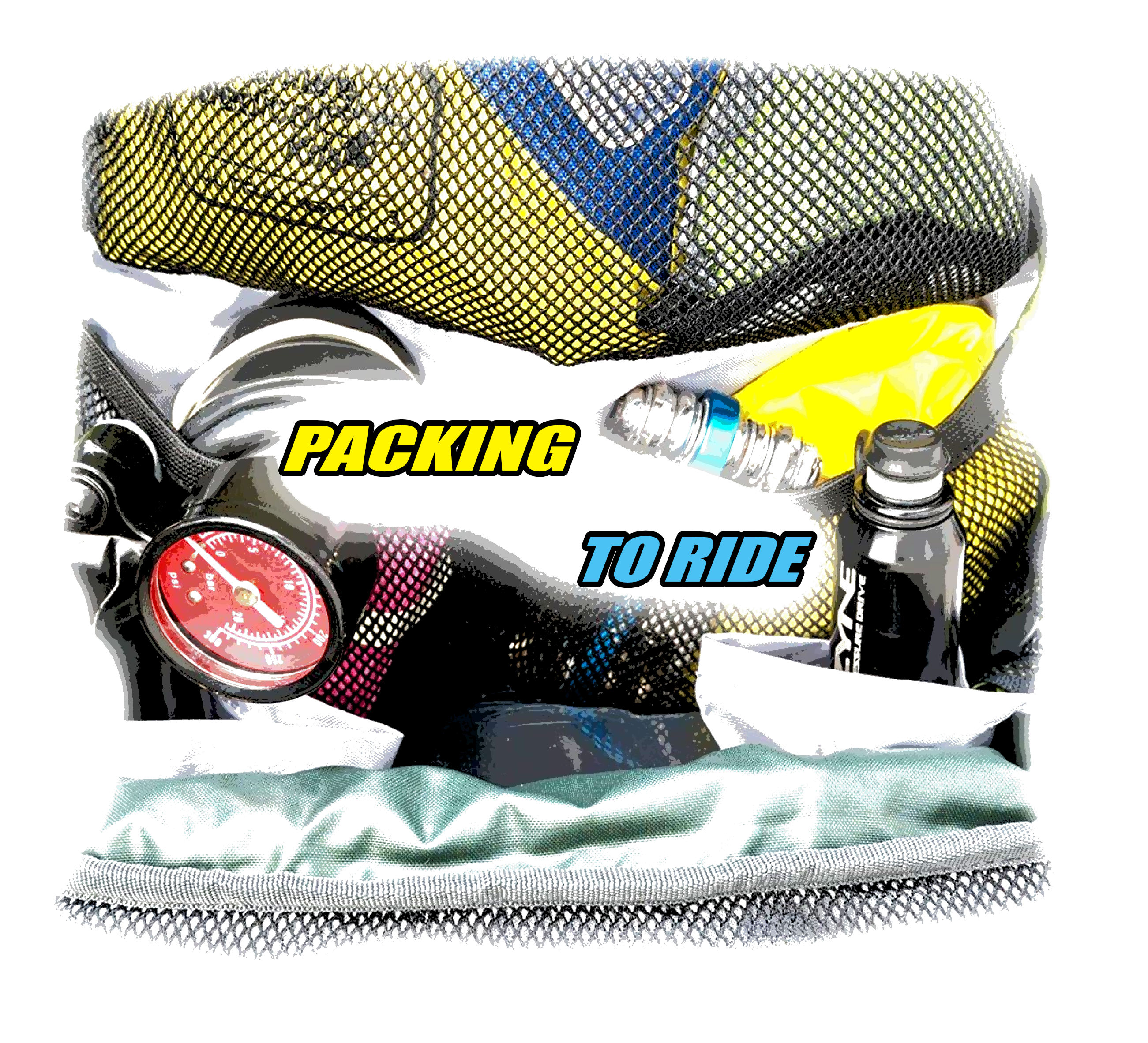Mountain bike rides come in many different forms. They traverse different terrains in different climates. You might be pedalling for an hour, or most of the day. In this article we’ll have a look at what you should be taking with you depending on the ride you are tackling. We’ll break it down to what we suggest is the basic kit needed, a more comprehensive version and finally, what MacGyver would take! We’ll even look closely at many of the different tools and spares we suggest and explain what they are and how they work.
Basic Ride Pack (for short rides close to home)
On every ride you should carry a few core things with you whether it be an hour or much longer ride.
- 1x Spare Tube to suit your wheels
- 1x Hand Pump (proper mtb high volume pump recommended)
- 3x Tyre levers
Regardless of whether your bike tyres are tubeless or not, you should have 1 spare tube, a good mtb pump and some tyre levers. Even if you are a newbie and don’t really know how to use these things, take them anyhow. MTBers are famously friendly and willing to help, so chances are, someone will get you going again. However, it’s unfair to expect them to give up their own spare tube for you and they’ll have more respect for you if you have your own gear, even if you are clueless on what to do with it.
For a short ride on local tracks, this is about all you really need if your bike is normally reliable. Should something more permanent occur, such as something breaks off the bike or a tyre gets ripped open, it’s hopefully not too far to walk back to the car.
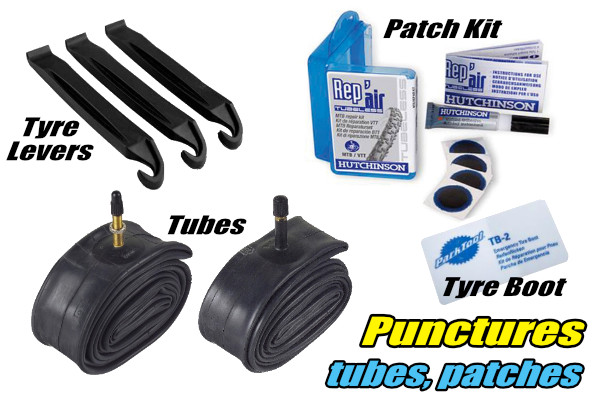 Tyre levers
Tyre levers
Look for tyre levers that are made from stiff plastic and a bead hook at one end and a spoke hook on the other. The bead hook is for getting under the bead of the tyre and hooking it up over the rim. The spoke hook is so once you’ve done that, you can hook the tyre lever on a spoke to hold the lever in place while you grab another and repeat the procedure. Some people take 3 levers which is an advantage if your tyres are tight to get off the wheel.
Tubes
Make sure your spare tube suits your tyre in size and suits your rim’s valve opening. In the pic above you can see on the left, a tube with what is called a “Presta”, “French” or “high pressure” valve mtb tube. The tube on the right is also an mtb tube but suits rims with a larger hole for the valve. These are usually on entry level wheels only and are called “Schrader” or simply “Car” valve mtb tubes.
Patch Kits
The patch kit should be well known to most readers. It’s simply a few patches, some sandpaper or metal file and, in the case of glue type kits, a tube of glue. Some kits are self adhesive so no glue included.
Tyre Boot
The tyre boot may not be known to many. This is a tough piece of vinyl/plastic that you stick to the inside of a tyre when a rock or similar has ripped a hole big enough to let a tube poke through. Handy to have for longer rides where you are a long way from the car.
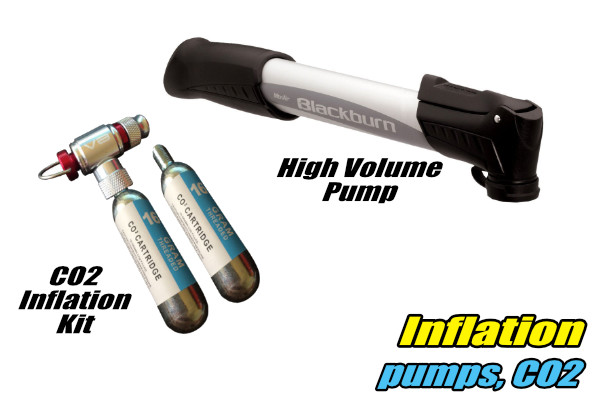
Pump
Pumps come in many types. Some are tiny to save space and weight. Some are larger and offer more air volume for quicker tyre inflation. Some have handles that flip out to form a ‘T’ for better grip. Some have built in gauges and more. Make sure the pump you choose will definitely suit the valve type for your tubes or tubeless setup. Most will handle either type of valve.
CO2 Kit
A CO2 kit is another way to inflate your tubes or tubeless tyres. The kit consists of an inflation head that screws onto and pierces a disposable, high pressure CO2 canister. Once set up on the canister and then screwed onto your valve, you simply twist a lever or knob to release the gas into your tube or tyre. Depending on the size of the canister, you may still need to finish the job with a pump but the CO2 can make light work of pumping up a tyre in the bush. Be warned though, CO2 leaks through rubber much quicker than air. Put it in one day and you’ll find your tyre half flat the next day. This means you need to let the CO2 out once you are home and replace it with air.
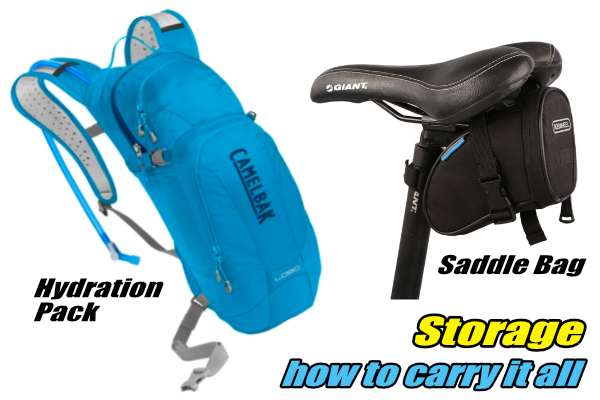
Storage is another consideration you might need to think of. Some cycling jerseys come with rear pockets and you might find these suit your needs if you only drink from a water bottle. However, if you don’t like bulky things in your pockets then a saddle bag or even hydration pack might be a better choice.
Hydration Pack
Many hydration packs (often called “Camelbaks” after the popular brand), offer not only the capability to carry drinking water, but also pockets for tools and spares etc as well. They are handy also for taking other items such as a vest in case of a rain shower for instance. This ability and the ease from which to drink make hydration packs very popular.
Saddle Bag
Saddle bags also come in different sizes and storage capacity, and as the image shows, they strap under your bike seat. For those not wanting or needing the bulk of a hydration pack, these might be a suitable alternative.
Comprehensive Ride Pack (for longer rides)
For longer rides that take you further from your car or civilisation, you should probably increase the ride kit to include more items. So now, including the 3 basic items for short rides, your kit might look like this:
- Spare Tube to suit your wheels
- Hand Pump (proper mtb high volume pump recommended)
- Tyre levers
- 1st Aid Kit
- Multi-tool
- Spoke Key
- Chain Breaker
- Chain Joiner (quick) Links
- Lube
- Cable Ties & Tape
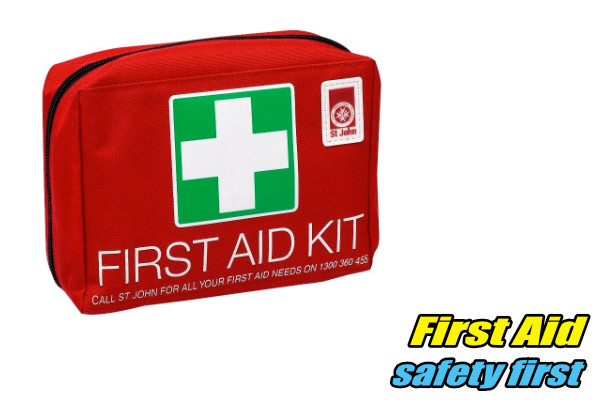
First Aid Kit
The more you ride and the further you go, the more likelihood of you or a riding buddy having some boo boo requiring first aid. Chances are, mummy isn’t going to be there to kiss it better, and, if you fell on your ass; your mates won’t either. So carrying a small first aid kit is a sensible idea for those longer rides. It doesn’t have to be comprehensive but do include the basics like sterile dressings, bandaids, quality bandage(s), sling, medical tape, antiseptic and thermal blanket.
If you are susceptible from anaphylactic shock for any reason such as food allergies or insect bites etc then carry your own EpiPen and make sure someone on the ride knows where it is and how to use it.
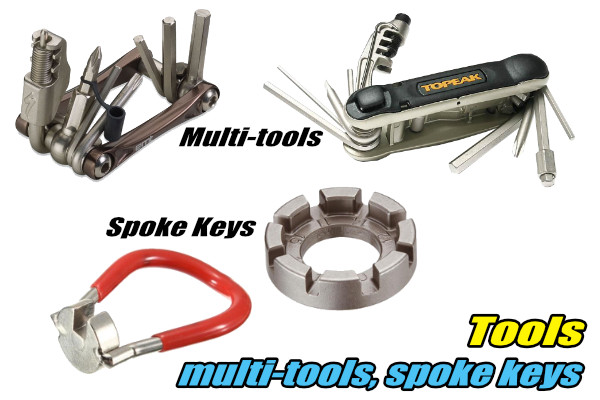
Multi-tool
You won’t find many riders out there who aren’t carrying some sort of multi-tool. These handy little devices usually come equipped with a set of allen key wrenches and screwdrivers to suit most fittings on your bike you might need to tighten or adjust. Some also include more specialised tools such a chain breaker to repair a broken chain or torque bits for tightening brake rotor bolts for instance. A few even include tyre levers integrated into them as well.
Spoke Key
Less critical to carry these days where disc brakes are prevalent (wheel buckles don’t affect disc brake bikes as easily as rim brake bikes), it is handy to be able to tighten up loose spokes if they occur during a ride. After a bit of a crash, you might even find you’ve buckled a wheel and a spoke key can help get you rolling again. You will need a spoke key that has the right sizing for your spokes.
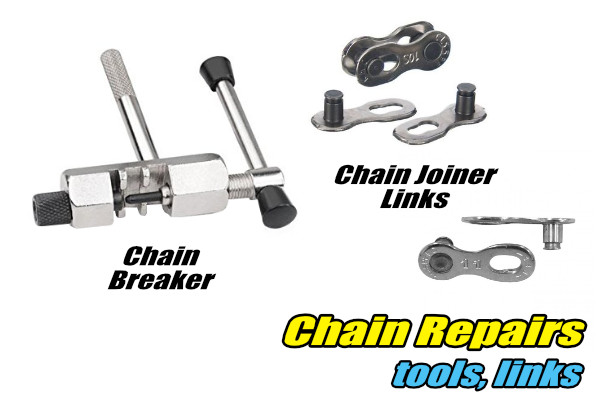
Chain Breaker
A broken chain is not an uncommon issue and often happens far from the car. As mentioned above, some multi-tools have chain breakers included in them. These can often be a bit awkward to use however, so sometimes a dedicated chain breaker tool is a better choice. The name chain breaker comes from the need to ‘break’ a piece of chain off so a joiner link can be added to rejoin the chain. To ‘break’ a chain in this context simply means pushing out a pin to remove a section of the chain.
Chain Joiner Links
These come in varying sizes to suit the chain you have. If your bike has an 11 speed cassette then you need an 11 speed chain joiner link; a 10 speed link for a 10 speed cassette and so on. In the pics you can see how the joiner links come apart and have a pin on each side. The chain will need to be broken so that both ends of the chain allow these pins to pass through and the two pieces of joiner link clip together.
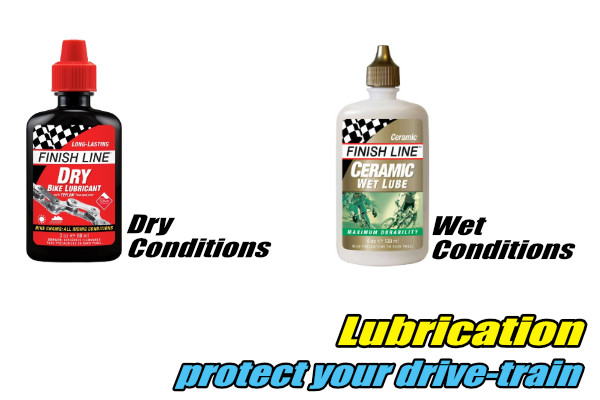
Lube
Carrying a small bottle of chain lube is a good idea when on longer rides. A badly lubed chain means more friction for you to push and more damage being done to your bike’s drive-train. There are many brands of lube and some specific for wet or dry conditions. Some are oil based and some are wax based. Wax based lubes usually run cleaner but often won’t last as long on the chain, especially if the trails are wet out there.
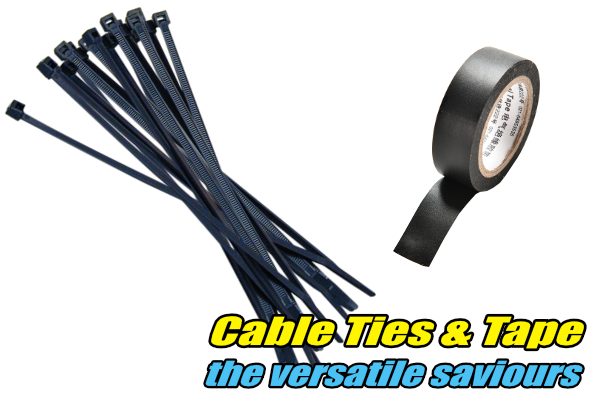
Cable Ties & Tape
The humble cable tie has been the saviour of many a rider. From replacing existing gear and brake cable holders to holding a busted derailleur onto your bike so you can ride or push it home, they are invaluable when they are needed. Electrical tape can quite often perform the same service as cable ties. The tape can be used also for splinting in the event of an accident, can make a tyre boot for tears in your tyre and anything else you can think of.
The MacGyver Pack (for the over-cautious or full day adventures)
Ok, if you have the comprehensive ride pack above then you are fairly well set up for your average to longer rides. However, if you really want the boy scouts to be impressed then there’s yet more you can pack in to be sure. Here’s how the full MacGyver pack might look…
- Spare Tubes to suit your wheels
- Hand Pump (proper mtb high volume pump recommended)
- Tyre levers
- 1st Aid Kit
- Multi-tool
- Spoke Key
- Chain Breaker
- Chain Joiner (quick) Links
- Lube
- Cable Ties & Tape
- Small Pliers
- Brake Pads
- Spare Cleat Bolts
- Spare Chainring Bolts
- Spare Hanger
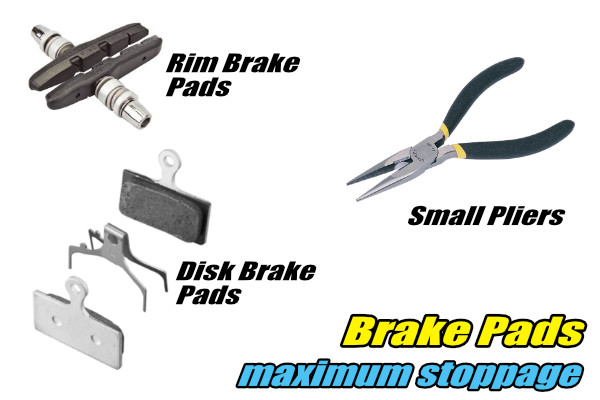
Brake Pads
Although we may joke that brakes only slow you down, it’s no joke when they fail you. We’ve been on rides with perfectly good disc brake pads (also spelt “disk”) only to suffer through an unexpected downpour in gritty terrain and have the the pads wear down to nothing an hour later. Unusual, but it happens. More likely is that one day you’ll be out the back of nowhere near anywhere, and suddenly you’ll hear the horrible sound of metal on metal because your pads just naturally worn away over many rides while you weren’t looking. Carrying a spare set of pads might just be the difference of walking a very long way or continuing to ride happily along.
Pliers
You can buy a pair of small, electrical pliers fairly cheaply. These handy little helpers can be gold if you are changing disc brake pads and a plethora of other uses. We even once used a pair to lever out a broken carbon seat post so the rider could at least continue, albeit with his knees around his ears. Not a good look, but he was grateful he had somewhere to sit without giving himself a hernia or worse.
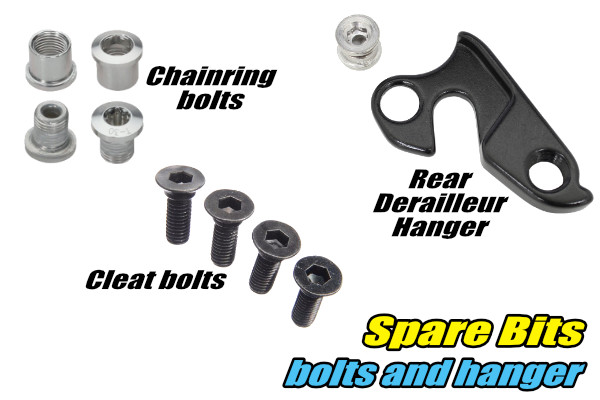
Being veterans of all day epic rides in the past, we have seen just about everything break, and everything come loose and get lost. When you venture out with 20 to 50 riders in tow for a 6 hour grind through the mountains, odds are someone’s bike is about ready to throw a curve ball of some sort.
Chainring bolts
Chainring bolts are the bolts that hold your front chainring (cog) to your pedal crank. Sometimes these are a single bolt and sometimes they are a two piece bolt. The two piece bolts often need a small but special tool to hold them as you tighten them, so maybe throw one of those in too.
Cleat Bolts
If you have clipless shoes then you have bolts holding the cleat (the bit that clips into the pedal) onto your shoes. If one of these come loose or fall out, then clipping in and out can be a nightmare or even impossible.
Hanger
If your bike has a replaceable derailleur hanger then take a spare along on the big rides. You often get one of these when you buy a new mountain bike. If not, it makes sense to buy one. Most of us who have been riding for many years have bent at least one hanger. All it takes is a small stick to bind up the derailleur and chain at the right angle etc and you can suddenly have a bent or broken hanger and a fist full of gears that don’t want to work now.
Packed to Ride
Well, that covers most of the things you might want to have with you when things go pear shaped on various rides. You can add even more, such as taking a shock pump along for your forks and rear shock, or water purifying tablets for treating water from creeks, waterproof matches in case you get lost and have to tuck in for the night and much more. We figured we had to stop somewhere. Hopefully our choices along with the our pics and explanations have been helpful.

